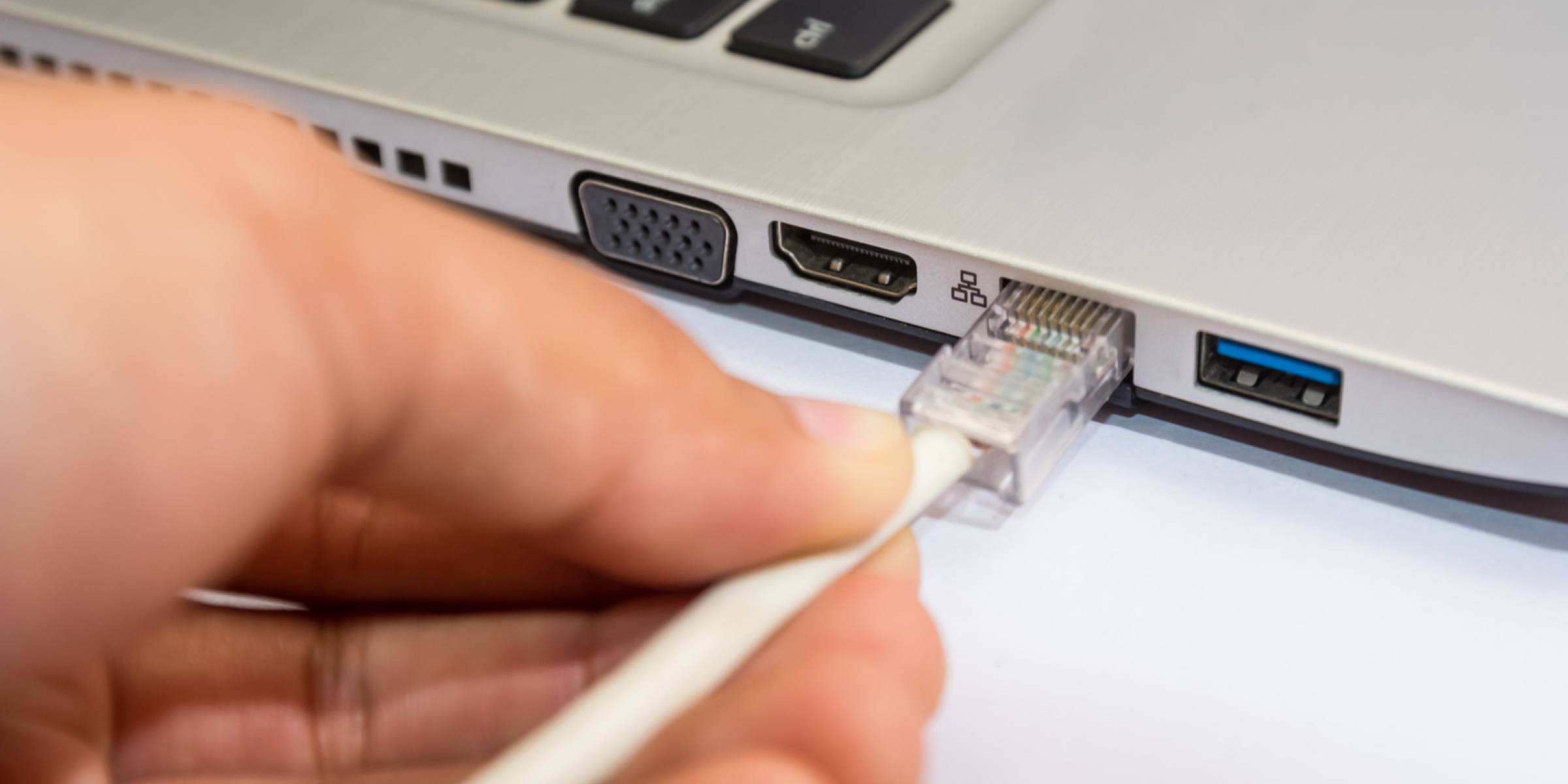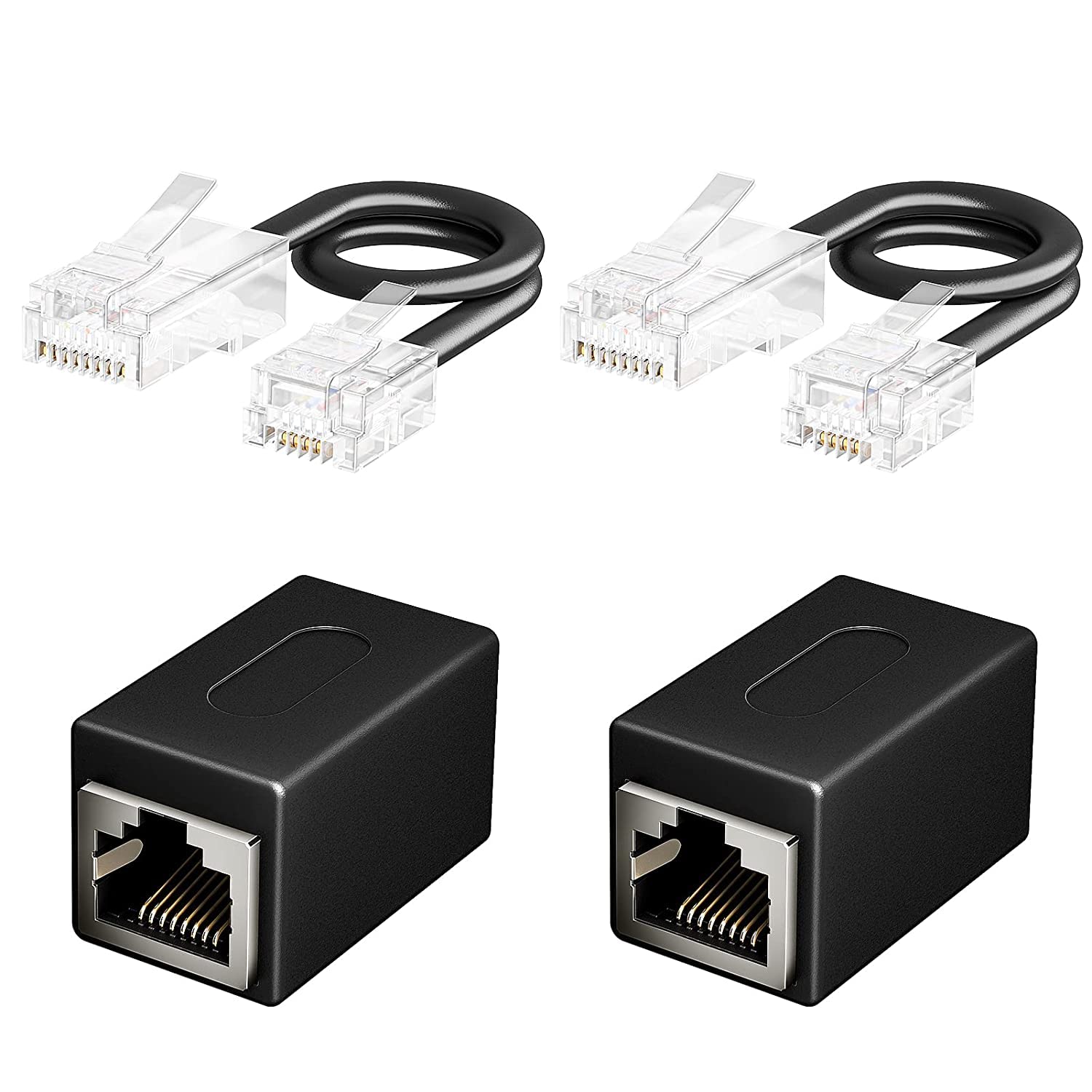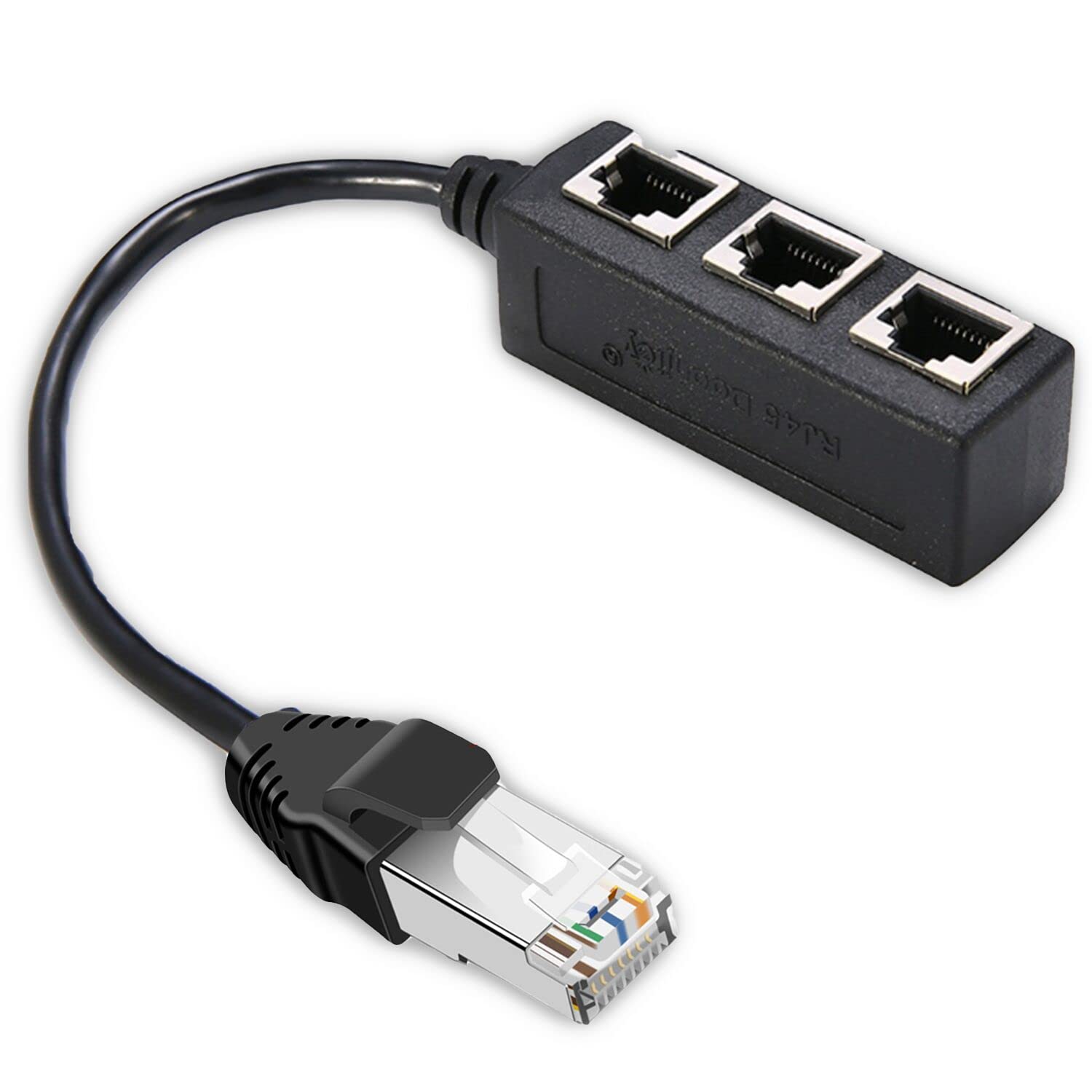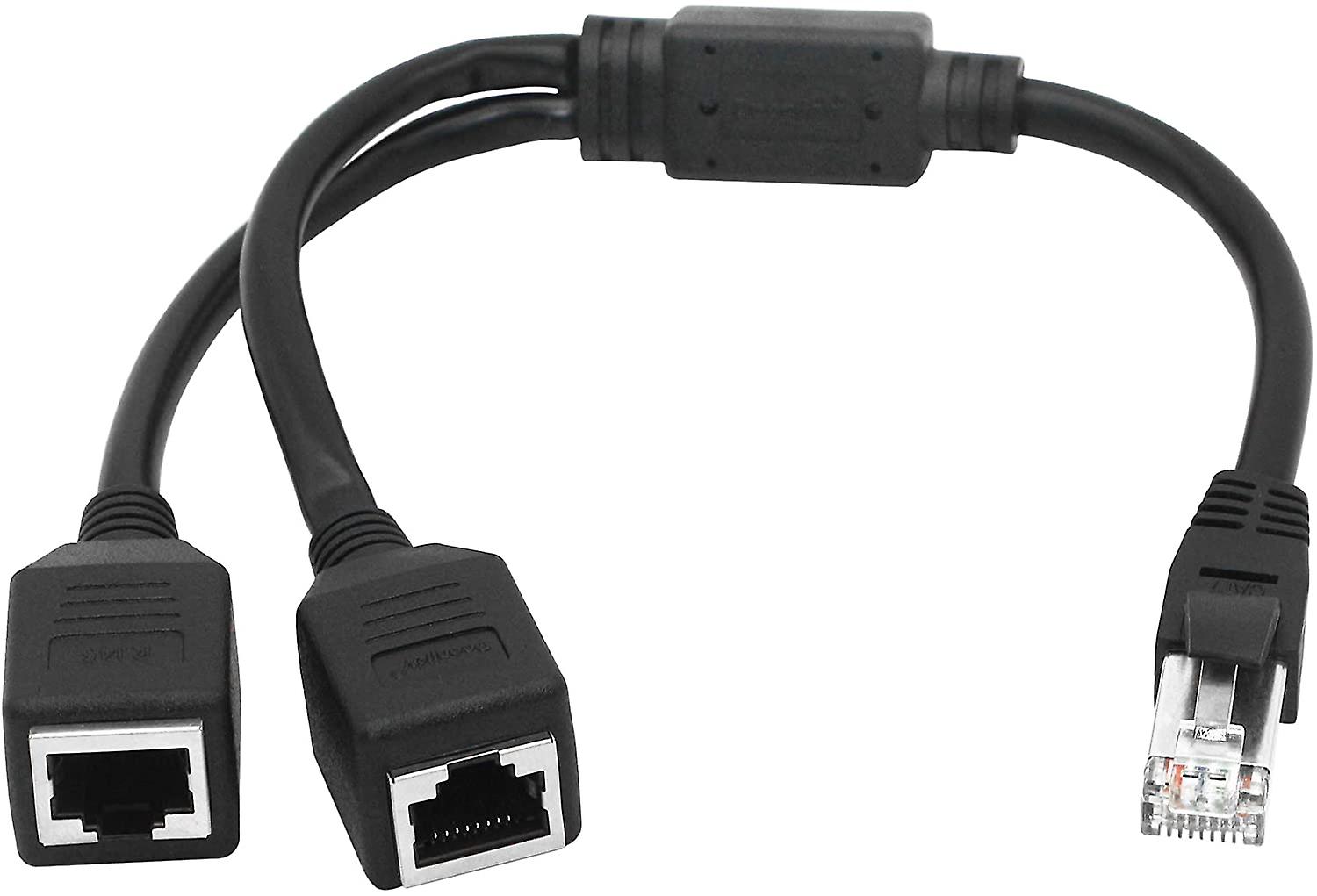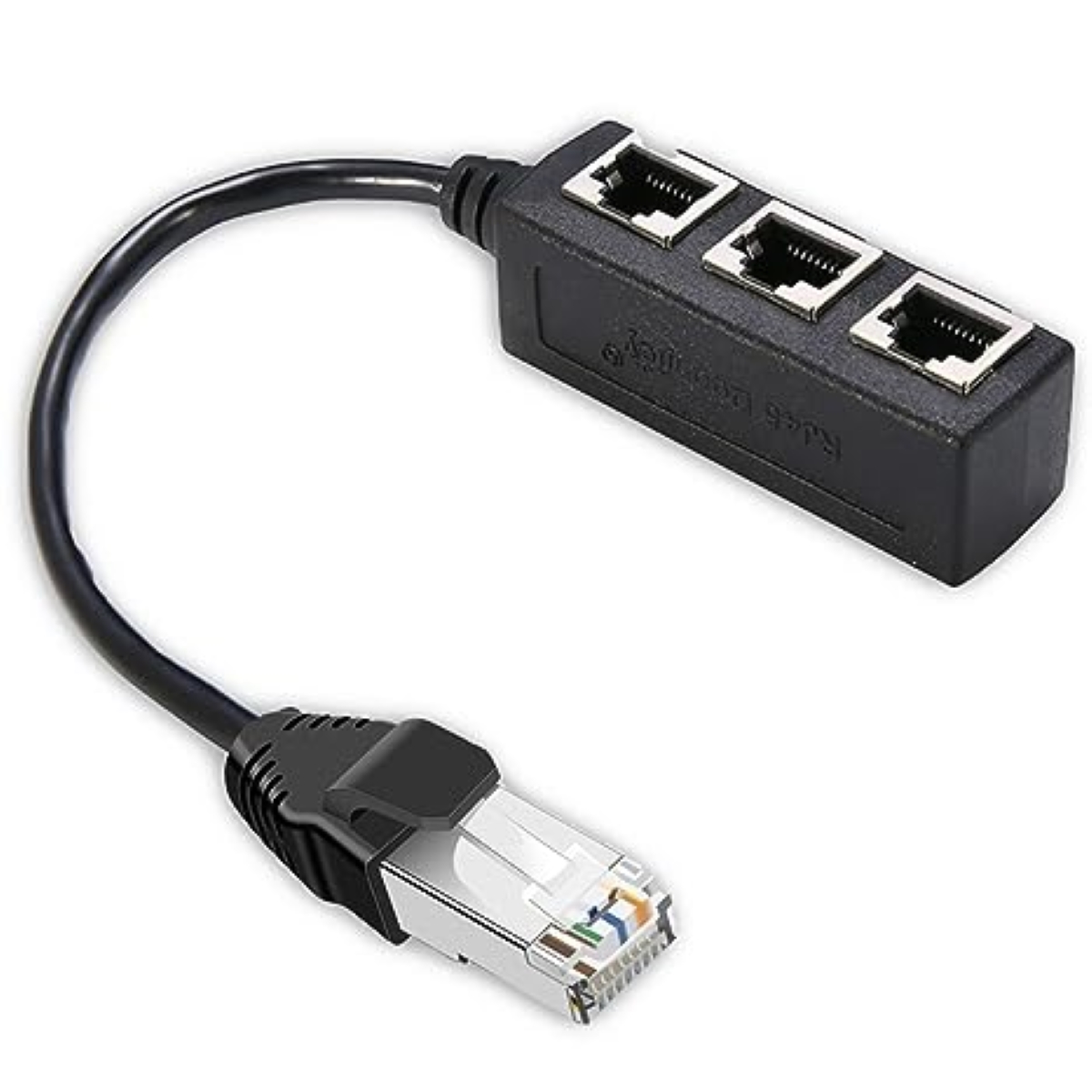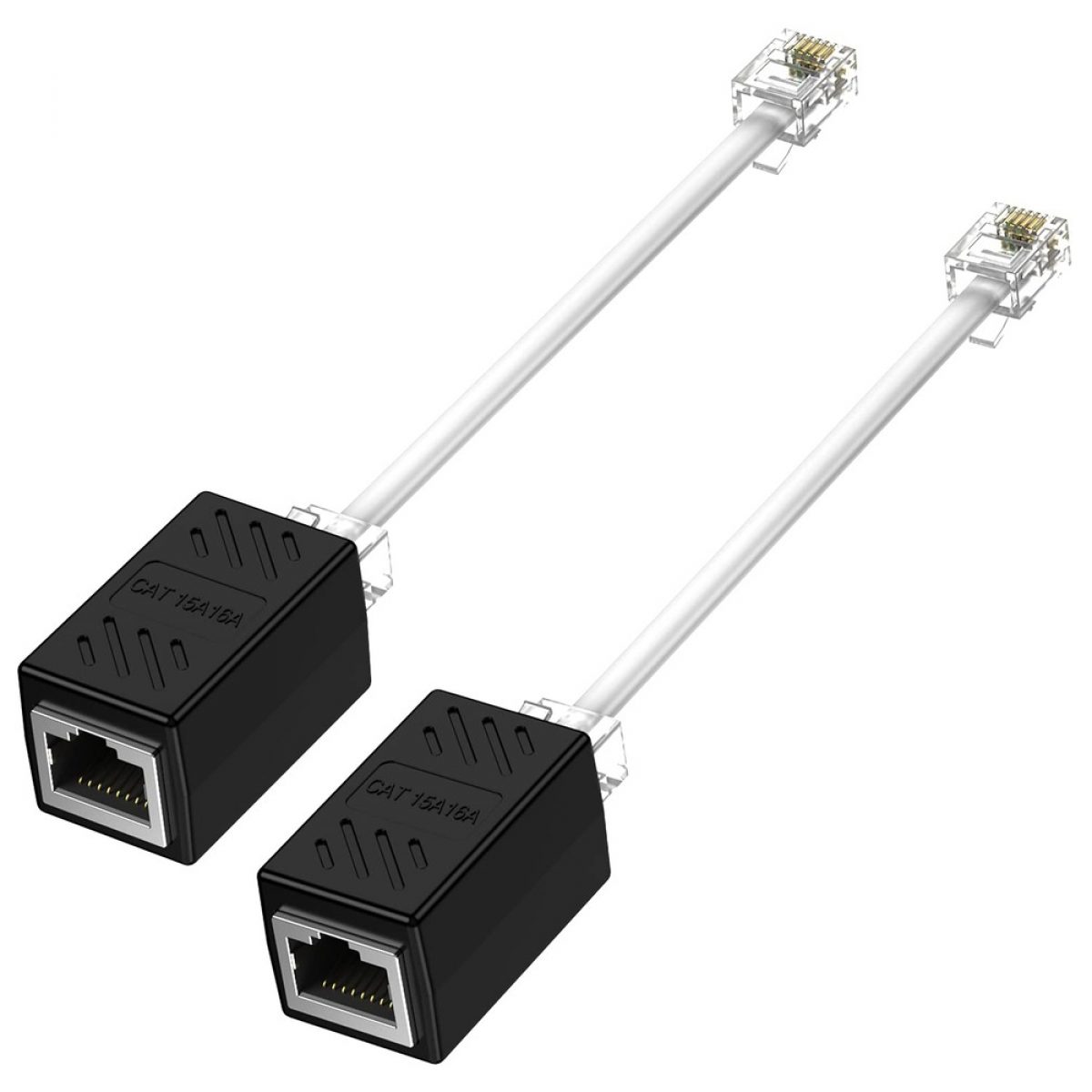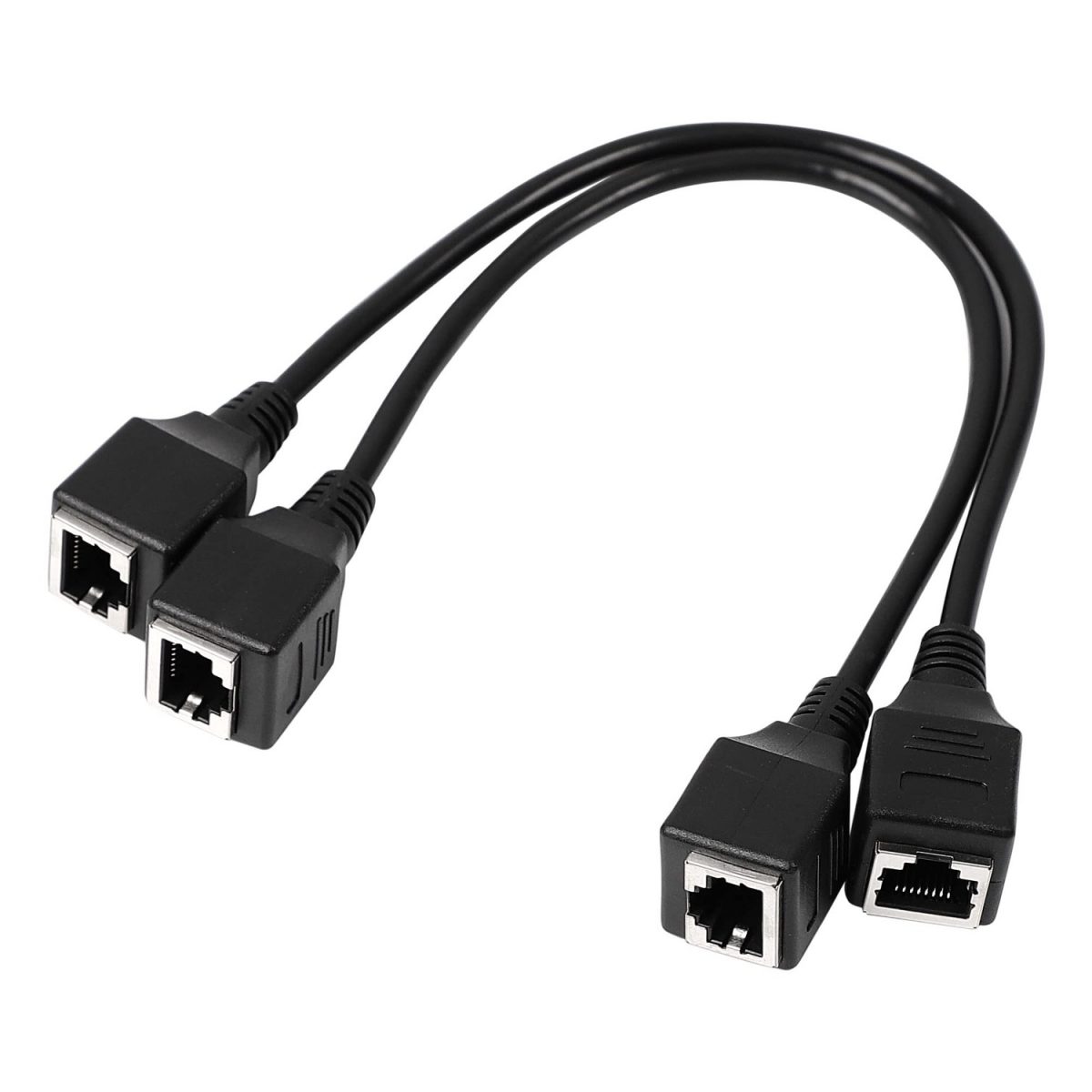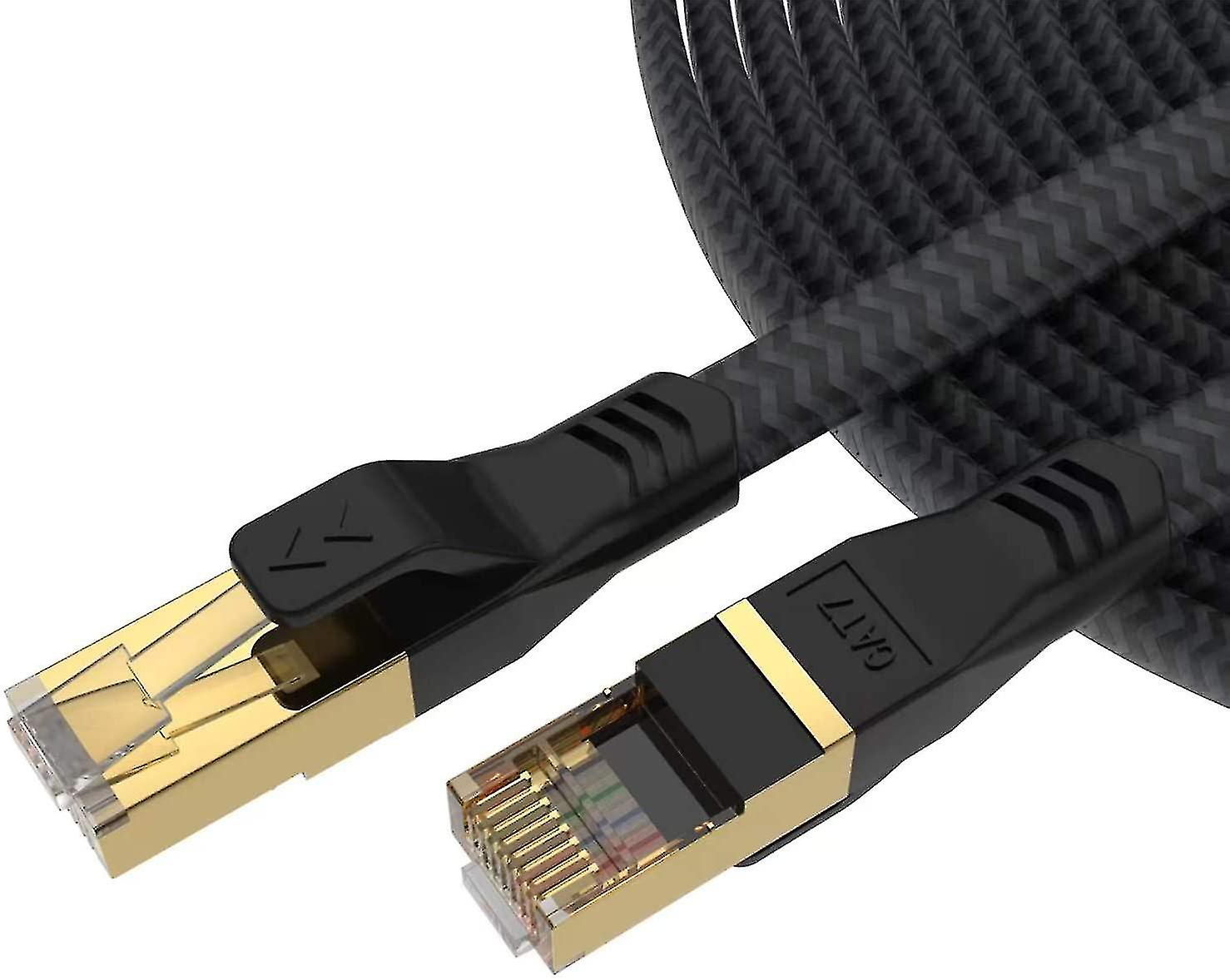Introduction
Welcome to the world of Ethernet cables, the backbone of modern network connectivity. In today’s fast-paced and interconnected world, Ethernet cables play a crucial role in enabling communication between devices and facilitating the transfer of data over a network. Whether you’re working from home, gaming online, or running a business, understanding what Ethernet cables are and how they work is essential.
An Ethernet cable, also known as a network cable or a patch cable, is a physical medium used to connect devices to a local area network (LAN) or the internet. It serves as a conduit for transmitting data signals between various devices such as computers, routers, switches, and modems. These cables are widely used in both residential and commercial settings to establish reliable and high-speed wired connections.
How do Ethernet cables work, you may wonder? Well, these cables consist of multiple twisted pairs of copper or fiber optic wires enclosed within an insulated sheath. The twisted pairs help reduce interference or crosstalk, allowing for stable and uninterrupted data transmission. At each end of the cable, there are connectors, such as RJ45 connectors, that securely plug into Ethernet ports on devices.
The importance of Ethernet cables in networking cannot be overstated. While Wi-Fi and wireless connections have gained popularity in recent years, Ethernet cables provide several advantages. They offer faster and more reliable data transfer speeds, making them ideal for applications that require low latency and high bandwidth, such as online gaming, video streaming, and large file transfers.
There are different types of Ethernet cables available, each with its own speed and performance characteristics. Some of the common types include Cat5e, Cat6, and Cat7. The choice of cable depends on factors such as the desired speed, distance, and the level of interference present in the environment. Selecting the right Ethernet cable ensures optimal performance and prevents bottlenecks in your network.
In the next sections, we will delve deeper into the different types of Ethernet cables, offer tips for choosing the right cable for your needs, and provide insights into installing and maintaining Ethernet cables. We will also discuss common Ethernet cable issues and provide troubleshooting tips to help you resolve them.
So, whether you’re a networking enthusiast, a small business owner, or a casual internet user, get ready to explore the world of Ethernet cables and unlock the full potential of your wired network connections.
What is an Ethernet Cable?
An Ethernet cable, also known as a network cable or a patch cable, is a physical medium used to establish wired connections between devices in a network. It is widely used in homes, offices, and data centers to transmit data signals and enable communication between devices.
Ethernet cables are designed to meet the industry standards set by the Institute of Electrical and Electronics Engineers (IEEE). These cables provide a reliable and stable connection, offering faster data transfer speeds compared to wireless connections.
The most common type of Ethernet cable is the twisted pair cable. Inside the insulated sheath of the cable, there are multiple pairs of twisted wires made from copper or fiber optics. These twisted pairs help to reduce interference and crosstalk, ensuring the integrity of the transmitted data.
At each end of the Ethernet cable, there are connectors known as RJ45 connectors. These connectors have eight pins that align with the eight wires inside the cable, allowing for a secure and reliable connection. The RJ45 connectors plug into Ethernet ports on devices such as computers, routers, switches, and modems.
Ethernet cables play a critical role in establishing local area networks (LANs) and wide area networks (WANs). They facilitate the transfer of data between devices within a network, enabling seamless communication and information sharing.
Although Wi-Fi and wireless connections have become prevalent, Ethernet cables offer several advantages. They provide faster and more reliable data transfer speeds, lower latency, and increased security compared to wireless connections. Ethernet cables are often preferred for applications that require high bandwidth, such as online gaming, video streaming, and large file transfers.
It’s important to note that Ethernet cables come in different categories, each with its own performance specifications. The most common categories include Cat5e, Cat6, and Cat7 cables. The category chosen depends on factors such as the required speed, distance, and environmental conditions.
In the next sections, we will explore how Ethernet cables work, discuss the importance of Ethernet cables in networking, and delve into the different types of Ethernet cables available in the market.
How Does an Ethernet Cable Work?
Ethernet cables work on the principle of transmitting data signals using electrical or optical signals. When a device, such as a computer or a router, sends data through an Ethernet cable, the cable acts as a conduit to carry the electrical signals from one end to the other.
Inside an Ethernet cable, there are multiple twisted pairs of copper or fiber optic wires. These twisted pairs help reduce interference or crosstalk between the wires, ensuring that the transmitted data remains intact and free from corruption.
When data is sent through an Ethernet cable, it is converted into binary form, consisting of zeros and ones. These binary digits represent different information such as text, images, or instructions. The data is then converted into electrical signals and sent as voltage pulses through the wires of the cable.
At the receiving end of the Ethernet cable, the voltage pulses are detected and converted back into binary data by the device. This allows the device to interpret the data and execute the appropriate actions based on the information received.
The speed at which data is transmitted through an Ethernet cable is measured in terms of megabits per second (Mbps) or gigabits per second (Gbps). Different categories of Ethernet cables have varying speed capabilities. For example, Cat5e cables typically support speeds up to 1 Gbps, while Cat6 and Cat6a cables can handle speeds up to 10 Gbps and beyond.
In addition to speed, Ethernet cables also have a maximum transmission distance. This distance depends on the cable type and the signal integrity. Generally, the maximum transmission distance for Ethernet cables is 100 meters (328 feet) for twisted pair cables. Beyond this distance, signal degradation may occur, leading to data loss or errors.
It’s important to note that the performance and speed of an Ethernet connection not only depend on the cable itself but also on the devices and network infrastructure involved. The capability of the devices, such as network interface cards (NICs) and switches, can affect the overall performance of the Ethernet connection.
Ethernet cables are essential in networking because they provide a reliable and stable wired connection. While wireless connections offer convenience and mobility, they can be susceptible to interference and signal quality issues. Ethernet cables, on the other hand, offer more consistent performance and higher data transfer speeds, making them ideal for applications that require low latency and high bandwidth.
In the following sections, we will explore the importance of Ethernet cables in networking, the different types of Ethernet cables available, and how to choose the right cable for your specific needs.
The Importance of Ethernet Cables in Networking
Ethernet cables play a crucial role in networking by providing a reliable and high-speed wired connection. While wireless technologies have gained popularity, Ethernet cables offer several advantages that make them indispensable in many networking scenarios.
One of the key advantages of Ethernet cables is their ability to deliver faster and more reliable data transfer speeds compared to wireless connections. This is particularly important for applications that require low latency and high bandwidth, such as online gaming, video streaming, and large file transfers. Ethernet cables ensure a stable and consistent connection, minimizing lag and buffering issues that can occur with wireless networks.
In addition to speed, Ethernet cables also offer enhanced security compared to wireless connections. With wireless networks, there is always a risk of unauthorized access or eavesdropping. Ethernet cables, on the other hand, provide a physically secure connection that is difficult to intercept. This makes them an ideal choice for environments where data security is a top priority, such as corporate networks or sensitive information systems.
Ethernet cables are also preferred in scenarios where network performance and stability are critical. In crowded environments with multiple devices competing for bandwidth, Ethernet cables ensure a dedicated and reliable connection. This is particularly important in office environments, where a stable network connection is essential for smooth business operations and productivity.
Another advantage of Ethernet cables is their compatibility with a wide range of devices. Whether it’s a computer, a gaming console, a streaming device, or a network switch, Ethernet cables can be easily connected to various devices with Ethernet ports. This versatility allows for seamless integration and communication between different devices within a network.
Furthermore, Ethernet cables provide a cost-effective networking solution. While the initial setup and installation of a wired network may require some investment, Ethernet cables have a longer lifespan and require less maintenance compared to wireless networks. They are less prone to signal interference and do not require additional equipment such as repeaters or signal boosters in larger spaces.
Overall, Ethernet cables are essential in networking due to their reliable performance, fast data transfer speeds, enhanced security, and versatility. They are the go-to choice for applications that require stability, low latency, and high bandwidth. Whether it’s for home usage, business operations, or data center connectivity, Ethernet cables provide the foundation for efficient and seamless network communication.
In the upcoming sections, we will explore the different types of Ethernet cables available, how to choose the right cable for your needs, and provide tips for installing and maintaining Ethernet cables.
Types of Ethernet Cables
Ethernet cables come in various types, also known as categories, each with its own speed and performance characteristics. The different types of Ethernet cables are designed to meet specific networking needs and standards. Let’s explore some of the common types:
- Cat5e: Cat5e (Category 5e) cables are widely used and offer a maximum speed of 1 Gigabit per second (Gbps). They are suitable for most home and small business networking applications. Cat5e cables are backward compatible with older Ethernet standards and are more resistant to crosstalk and interference compared to Cat5 cables.
- Cat6: Cat6 (Category 6) cables provide higher performance than Cat5e cables, with maximum speeds of up to 10 Gbps. They are designed to handle the increased bandwidth requirements of modern applications and are ideal for demanding tasks such as multimedia streaming and online gaming. Cat6 cables have improved data transmission capabilities and reduced signal loss.
- Cat6a: Cat6a (Category 6a) cables offer even higher performance and increased maximum speeds of up to 10 Gbps at longer distances compared to Cat6 cables. They are suitable for large-scale enterprise networks and data centers that require high-speed data transfer and minimal signal degradation. Cat6a cables have enhanced shielding to minimize crosstalk and external interference.
- Cat7: Cat7 (Category 7) cables provide the highest performance and speed in Ethernet cables. They can support speeds of up to 10 Gbps or even 40 Gbps over shorter distances. Cat7 cables have individually shielded pairs and overall shielding to provide superior protection against crosstalk and external interference. They are commonly used in professional networking environments that demand the highest level of performance and reliability.
It’s important to note that the maximum speed mentioned for each category represents the theoretical maximum, and actual speeds may vary depending on factors such as the network infrastructure, devices involved, and other environmental conditions.
When choosing the right Ethernet cable for your needs, consider factors such as the desired speed, distance requirements, and the level of interference present in your environment. If you have multiple devices or require high-speed connections, Cat6 or Cat6a cables are ideal. For demanding professional applications or future-proofing your network, Cat7 cables offer the highest performance.
Keep in mind that the category of the cable should match the capabilities of your devices and network infrastructure. For example, if your devices and switches support Cat6 speeds, using Cat6a or Cat7 cables may not provide any additional benefits.
In the upcoming sections, we will provide tips for choosing the right Ethernet cable for your specific needs, as well as guidelines for installing and maintaining Ethernet cables to ensure optimal performance.
How to Choose the Right Ethernet Cable for Your Needs
Choosing the right Ethernet cable is crucial to ensure optimal performance and compatibility with your networking requirements. Here are some factors to consider when selecting an Ethernet cable:
- Speed: Determine the speed requirements of your network. If you need gigabit speeds or higher, consider Cat6, Cat6a, or Cat7 cables. For basic home or small office networking needs, Cat5e cables may suffice.
- Distance: Consider the distance over which you need to run the Ethernet cable. Each cable type has a maximum transmission distance, so ensure that the chosen cable category meets your distance requirements.
- Interference: Assess the level of interference in your environment. If you expect significant interference from other electronic devices or electrical noise, choose cables that offer better shielding, such as Cat6a or Cat7.
- Future-proofing: If you anticipate the need for higher network speeds in the future or plan to upgrade your devices, it may be wise to invest in higher category cables like Cat6a or Cat7 to ensure compatibility and performance.
- Budget: Consider your budget when choosing an Ethernet cable. Higher category cables tend to be more expensive, so strike a balance between your needs and budget constraints.
- Compatibility: Ensure that the Ethernet cable chosen is compatible with your networking devices. Check the Ethernet port specifications on your devices and select a cable that matches those requirements.
Additionally, keep in mind that the performance of an Ethernet connection is not solely dependent on the cable. Factors such as the network infrastructure, devices involved, and other setup configurations can also impact network performance. Consider the overall network setup and ensure that all components are capable of supporting the desired speed and performance.
It’s worth noting that Ethernet cables are backward compatible, which means that a higher category cable can be used with devices that support lower category speeds. For example, you can use a Cat6a cable with devices that only require Cat5e speeds, and it will still function effectively.
By considering these factors, you can make an informed decision and choose the right Ethernet cable to meet your specific networking needs. In the next section, we will provide valuable tips for installing and maintaining Ethernet cables to ensure optimal performance and longevity.
Tips for Installing and Maintaining Ethernet Cables
Proper installation and maintenance of Ethernet cables are crucial for ensuring optimal performance and reliability of your network connection. Here are some tips to follow when installing and maintaining Ethernet cables:
- Cable Length: Avoid excessive cable lengths as they can lead to signal degradation. Stick to the recommended maximum length for the specific Ethernet cable category (usually 100 meters or 328 feet for twisted pair cables).
- Avoid Sharp Bends: Do not bend Ethernet cables at sharp angles, as this can damage the wires inside and impact data transmission. Use gentle curves when routing cables to avoid strain and interference.
- Secure Connectors: Ensure that connectors are securely plugged into the Ethernet ports of devices. Loose connections can lead to intermittent connectivity or data loss. Avoid applying excessive force when plugging or unplugging cables to prevent damage to the connectors.
- Keep Cables Away from Interference: Minimize the proximity of Ethernet cables to sources of interference, such as power cables, fluorescent lights, or other electronics. These sources can introduce electrical noise and interfere with the signal quality.
- Use Cable Clips or Cable Management: Use cable clips or cable management solutions to organize and secure Ethernet cables. This helps prevent accidental disconnections, minimizes cable tangling, and improves the overall aesthetics of your setup.
- Regularly Inspect Cables: Periodically inspect Ethernet cables for signs of wear, damage, or fraying. Damaged cables can degrade performance or cause intermittent connectivity issues. Replace any damaged cables promptly to maintain a reliable connection.
- Avoid Overloading: Avoid overloading a single Ethernet cable with too many devices. Distribute the workload across multiple cables or consider using a network switch to expand your connection capabilities.
- Proper Cable Management: Organize your Ethernet cables and label them to simplify troubleshooting and maintenance tasks. Proper cable management reduces the chances of accidental disconnections and allows for easier identification of specific cables.
- Perform Speed Tests: Periodically perform network speed tests to ensure that your Ethernet cables are performing as expected. This helps identify any potential issues and allows for adjustments to optimize network performance.
- Stay Up-to-Date: Stay informed about advancements in Ethernet cable technology and industry standards to ensure compatibility and leverage the potential benefits of new developments.
By following these installation and maintenance tips, you can ensure that your Ethernet cables are properly installed, functional, and perform optimally. Regular inspection and proactive maintenance will help prevent potential issues and ensure a reliable and stable network connection.
In the next section, we will discuss common issues that may arise with Ethernet cables and provide troubleshooting tips to help you resolve them.
Common Ethernet Cable Issues and Troubleshooting
While Ethernet cables are generally reliable, like any technology, they can sometimes experience issues that affect network connectivity. Here are some common Ethernet cable issues and troubleshooting tips to help you resolve them:
- Loose Connections: Loose or improperly connected Ethernet cables can cause intermittent or no connectivity. Ensure that the connectors are securely plugged into the Ethernet ports and that they are seated properly.
- Cable Damage: Physical damage to Ethernet cables, such as cuts, fraying, or bent connectors, can impact signal transmission. Inspect cables regularly and replace any damaged cables to restore optimal performance.
- Interference: Interference from other electronic devices, power cables, or wireless signals can degrade Ethernet cable performance. Keep Ethernet cables away from sources of interference and ensure proper shielding, especially when using higher category cables like Cat6a or Cat7.
- Signal Degradation: Excessive cable length beyond the recommended maximum can result in signal degradation and slower speeds. Stick to the advised maximum length for the specific cable category to maintain optimal performance.
- Crosstalk: Crosstalk occurs when signals from different Ethernet cables interfere with each other. This can result in data errors or slower speeds. Use properly shielded cables and ensure proper cable management to minimize crosstalk.
- Outdated Cable Standards: If you are experiencing slow speeds or connectivity issues, check if your Ethernet cable supports the required speed. Upgrading to a higher category cable, such as Cat6 or Cat6a, may be necessary to achieve the desired performance.
- Faulty Network Equipment: Sometimes, the issue may lie with the network equipment rather than the Ethernet cables themselves. Check if routers, switches, or network interface cards (NICs) are functioning properly. Replace or troubleshoot any faulty equipment as needed.
- Incorrect Cable Type: Using an incompatible Ethernet cable for your network’s requirements can result in poor performance. Verify that the cable category matches the capabilities of your devices and network infrastructure.
- Software or Driver Issues: Occasionally, software or driver issues can impact Ethernet cable functionality. Ensure that you have the latest drivers installed for your network devices and check for any software updates or patches that may address connectivity issues.
- Improper Configuration: Check your network settings to ensure proper configuration. Incorrect IP settings or subnet masks can affect network connectivity. Double-check the configuration settings on all devices to ensure they are set correctly.
If you encounter any Ethernet cable issues, it is recommended to troubleshoot systematically by testing different components, replacing cables if necessary, and verifying the settings and configurations. If the issue persists, consult technical support or seek assistance from a professional network technician.
By being aware of these common Ethernet cable issues and applying the appropriate troubleshooting steps, you can diagnose and resolve connectivity problems efficiently, maintaining a reliable and fast network connection.
Conclusion
Ethernet cables are the backbone of modern network connectivity, enabling fast and reliable wired connections for a wide range of applications. Understanding the various types of Ethernet cables, how they work, and how to choose the right cable is essential for optimizing network performance and ensuring seamless communication between devices.
From the standard Cat5e cables to the high-performance Cat7 cables, each Ethernet cable category offers different speed capabilities and features to meet specific networking needs. Consider factors such as required speed, distance, interference levels, and budget when selecting the appropriate cable.
Proper installation and maintenance of Ethernet cables play a significant role in maintaining a reliable network connection. Follow best practices such as avoiding sharp bends, securing connectors, managing cable organization, and regularly inspecting cables for damage. Additionally, troubleshooting common Ethernet cable issues, such as loose connections or interference, can help restore optimal performance.
While wireless technologies are ubiquitous, Ethernet cables continue to be the preferred choice for applications that demand low latency, high bandwidth, and reliable connectivity. They offer faster speeds, enhanced security, and a stable network connection, making them ideal for gaming, online streaming, and business operations.
As technology continues to advance and networking requirements evolve, staying informed about the latest Ethernet cable standards and advancements is essential. Upgrading your Ethernet cables and keeping up with industry developments can ensure compatibility and benefit from the latest performance improvements.
Remember, Ethernet cables provide the foundation for efficient and seamless network communication. By selecting the right cables, properly installing and maintaining them, and troubleshooting any issues that arise, you can enjoy a fast, stable, and reliable network connection for all your connectivity needs.







